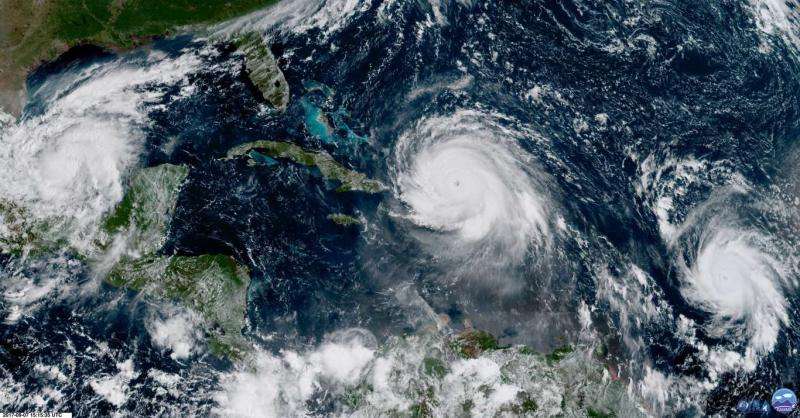Researchers weigh the factors that power hurricanes

The factors that influence the intensity of hurricanes like Irma and Harvey are under scrutiny at the Department of Energy's Pacific Northwest National Laboratory, where researchers are sorting the environmental conditions that can spawn such powerful storms.
Oceanographer Karthik Balaguru, an expert on hurricane intensification, says it's well known that warm ocean temperatures feed hurricanes, and right now waters in both the Gulf of Mexico and the Caribbean are very warm, powering hurricanes Harvey and Irma. Another crucial influence is wind shear, which describes the change in the speed and direction of winds according to altitude. Typically, low wind shear conditions increase a storm's strength; with weak wind shear prevailing in the Atlantic, Irma was able to rapidly gain strength and maintain it.
Another factor now in play in the Caribbean is the influence that one hurricane will have on another that closely follows on its heels. The team has shown that the first storm can reduce the intensity of the subsequent storm by up to 15 percent. That's good news for areas that will be affected by Hurricane Jose, which is currently following Irma's path.
While Irma is an intense hurricane, it's not the most powerful one Balaguru has studied. Last year he and Gregory Foltz of the National Oceanic and Atmospheric Administration studied the most powerful hurricane on record—Hurricane Patricia, which intensified in the eastern Pacific in 2015 and briefly hit a wind speed of 213 miles per hour. The team found not only that warm waters powered Patricia but that the abnormal depth of those warm waters played an important role. Also at play was a phenomenon that Balaguru calls "freshwater effect"—low-density river water emptying into the ocean, stabilizing the water column and ultimately intensifying the hurricane.
More information: Karthik Balaguru et al. Cyclone-cyclone interactions through the ocean pathway, Geophysical Research Letters (2014). DOI: 10.1002/2014GL061489
Gregory R. Foltz et al. Prolonged El Niño conditions in 2014-2015 and the rapid intensification of Hurricane Patricia in the eastern Pacific, Geophysical Research Letters (2016). DOI: 10.1002/2016GL070274
Journal information: Geophysical Research Letters
Provided by Pacific Northwest National Laboratory




















